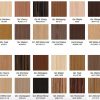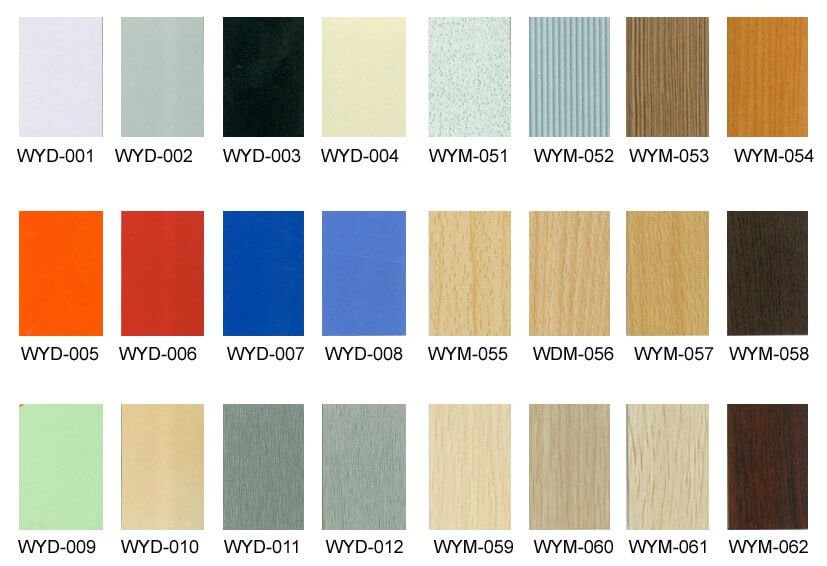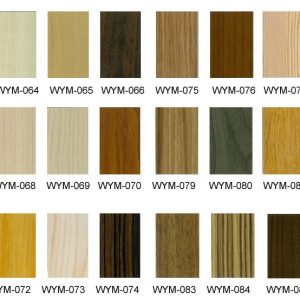Colors Melamine MDF
Description
1.Fiberboards
Medium Density Fiberboard (MDF)
MDF is a type of wooden material constituting of lignocellulosic fibers combined with resin and wax in the presence of high pressure and temperature. In the market, fiberboards are graded in terms of densities. Their making process sees variations of pressure and temperature resulting in different densities of the material. For example, HDF (High density Fiberboard) will require more pressure and temperature.
Advantages of MDF
- MDF has a smooth feel consistent on the entire material.
- MDF is less costly than Plywood.
- It makes use of wood residuals in their processing phase thereby enables more conservation of trees.
- For its finishing, painting is easier on MDF compared to typical wood as some colors won’t be suitable for it.
- MDF can be shaped to suit various designs. The consistent smooth nature of the material makes it easier to cut through using tools such as jigsaw and band saw.
- For Veneer, it is an excellent substrate.
- MDF is consistent in strength too.
Then coating mdf is the better choice……Request a Quote
2.Coating
1. Melamine
Initially an organic compound, melamine resin is formed through polymerization as a hard and durable plastic material. It possesses high heat and fire resistance attributes and is commonly applied to particleboard, plywood or MDF. It can be found in a variety of colors, patterns, sizes, and thickness.
Uses
It is used on cabinets, floors, counters, furniture, and whiteboards.
Advantages
- There is a wide array of melamine colors and patterns to choose from.
- The coating is not only waterproof but also shatter and scratch resistant.
- It offers a concordant finish.
- It is cost friendly in that it is used to cover other wood products.
- It is a lightweight material.
Disadvantages
- As a coating, it is susceptible to chipping.
- In some instances splintering can occur where nails and screws are used.
2. Veneer


Fine slices of wood which are adhered to wood panels for example MDFs and particle boards to provide a flat panel. Veneer is obtained through slicing of flitches or paring tree trunks through the use of rotary lathes or slicing machines. The grain appearance on veneer depends on the wood species for example mahogany, ebony, and teak. Classes of veneers include phenolic backed, raw, wood on wood, laid up, reconstituted, and paper backed veneers. Veneer can be often differentiated from Solid wood as any carving need to be painted as the natural wood ring on the veneer cannot be pressed onto the carving. Moreover by looking into drilled hole for screws or hinges, we can see whether the inner material is MDF or particle board or solid wood!
Uses
- Adding the appearance of wood to anything for example furniture.
- As a decorative material for wood projects.
- Veneer is also a form of manufactured board
Advantages
- Compared to wood, the occurrences of cracking and splitting are significantly reduced.
- The adhesive used in placing the veneer provides additional strength to the wood.
- Veneers are sustainable as furniture made with veneers use less wood as compared to those made of natural wood only.
- Due to temperature and humidity changes, solid wood may not be ideal in certain projects. Veneers are better alternatives due to their superb expansion and contraction characteristics.
- Veneers provide high quality finishes.
Disadvantages
- Lengthened exposure to moisture can damage the wood veneers.
- To last longer, they will require more maintenance such as polishing and varnishing.
- Wood veneers can’t be repaired once damaged.
Size: 1220×2440, 1830×2440, 1220×2745,1830×3660,2100x2800mm,
Thickness: 1.9mm,2mm-25mm…






